#irving monroe
Text
Irving: You've got to use reverse psychology.
Yoshimitsu: Sounds too complicated.
Irving: Okay, don't use reverse psychology.
Yoshimitsu: Fuck you, I'll use reverse psychology if I want to, and I want to!
#lovestruck#lovestruck voltage#gangsters in love#yoshimitsu valentine#irving monroe#incorrect quotes#my posts
18 notes
·
View notes
Text
happy father’s day to the Gangsters In Love dilfs of my heart <3

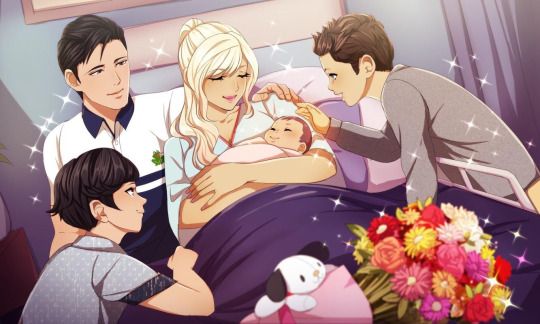



#lovestruck voltage#lovestruck#gangsters in love#yoshimitsu valentine#chance valentine#ash winters#irving monroe#mateo estrada#yoshimitsu#chance#ash#irving#mateo
110 notes
·
View notes
Text
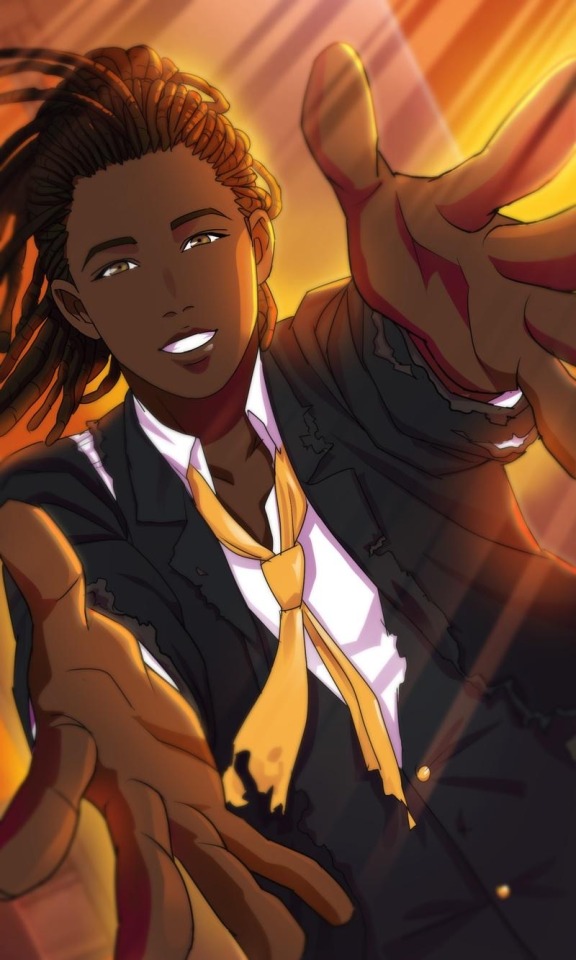
IT HIS BIRTHDAY AND I DIDNT EVEN KNOW
#shame on me#lovestruck#lovestruck voltage#gangsters in love#irving monroe#gil#IM GOING POST MORE ABOUT HIM I SWEAR
12 notes
·
View notes
Text



Irving Monroe's Bedroom
14 notes
·
View notes
Text
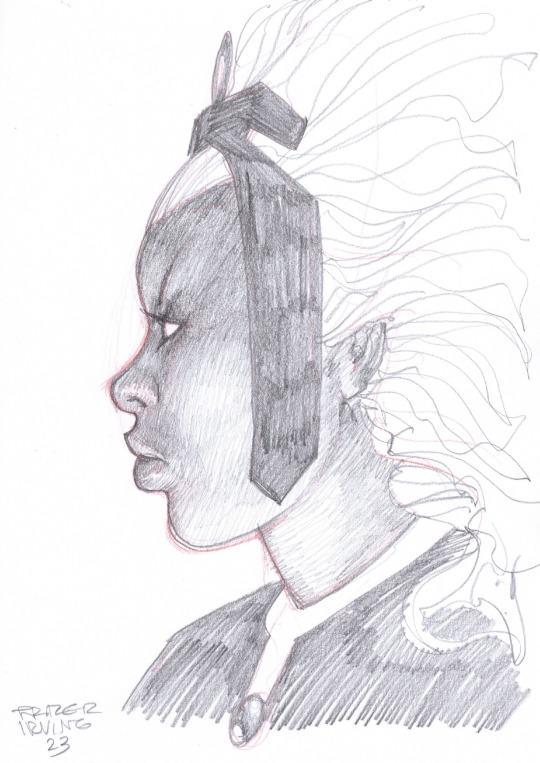
Storm by Frazer Irving
#frazer irving#storm#oror#ororo of the storm#ororo munroe#ororo monroe#art#artwork#x-men#x-women#xwomen#xmen#marvel#marvel universe#marvel superheroes#marvel comics#marvel heroes
100 notes
·
View notes
Text

There's No Business Like Show Business by Walter Lang, 1954
#Walter Lang#irving berlin#marilyn monroe#ethel merman#donald o'connor#dan dailey#musical#classic movies#romance#1950s fashion#1950s movies#1950s#1950s music#there's no business like show business
2 notes
·
View notes
Photo

Da ist kein Geschäft wie das Schaugeschäft wäre auch ein dummer deutscher Titel gewesen, sagt der Tobi. Solange die Leute mit Rhythmus im Blut Irving-Berlin-Liedchen vortragen, sind uns der Titel, sowie die Handlung egal.
#There's No Business Like Show Business#Ethel Merman#Donald O'Connor#Marilyn Monroe#Dan Dailey#Mitzi Gaynor#Johnny Ray#Film gesehen#Walter Lang#Musical#Irving Berlin
3 notes
·
View notes
Text
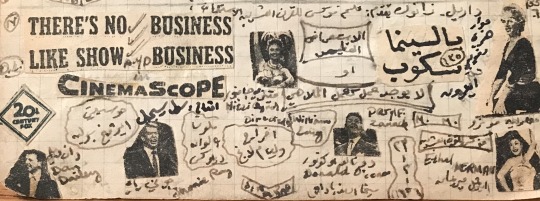
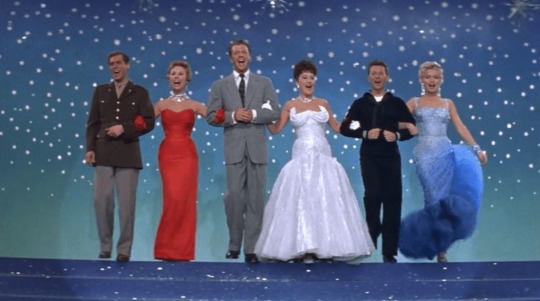

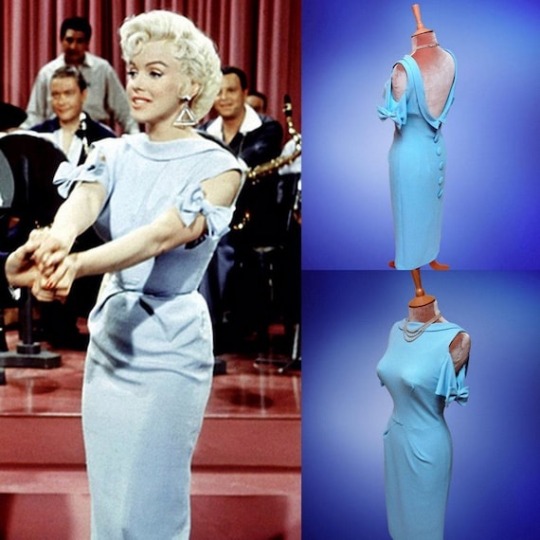

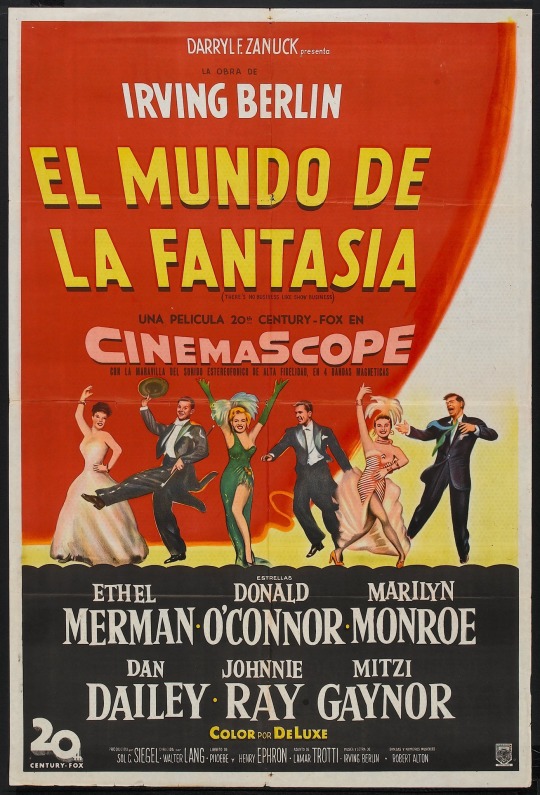

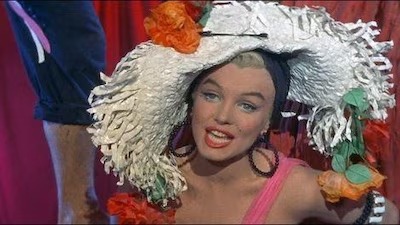
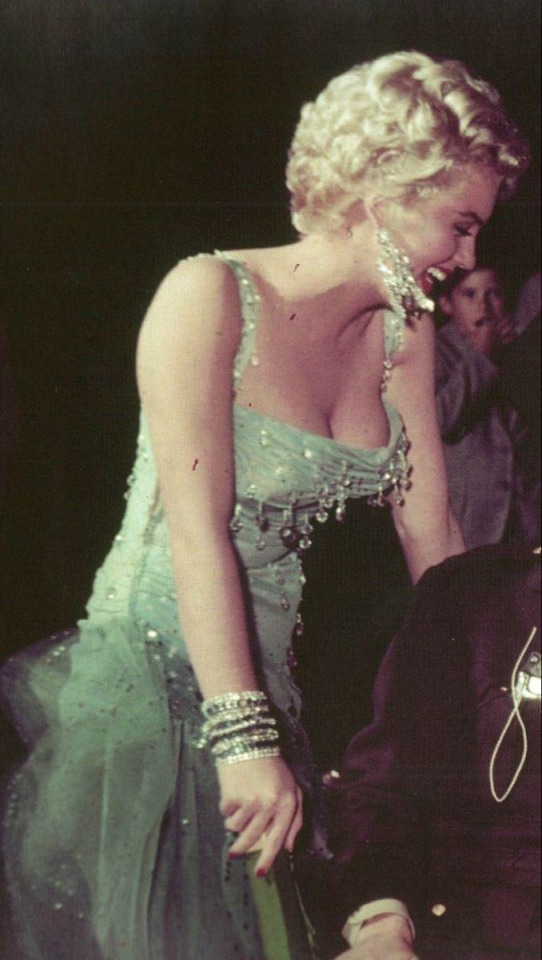
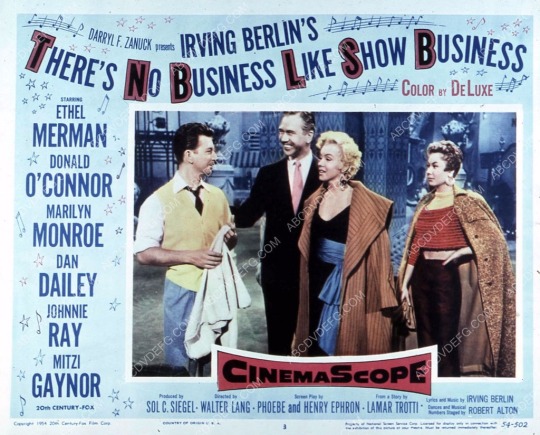
1954..Marilyn Monroe outshines the rest of the stars in this one-song show
0 notes
Photo

Marilyn Monroe reads a copy of Irving Shulman's novel The Big Brokers at a bookstore on Sunset Boulevard, Beverly Hills, California, 1953
575 notes
·
View notes
Text

Nine trailblazing women from Monroe A. Major’s 1883 book, “Noted Negro Women Their Triumphs, and Activities.” These women believed in education and became teachers, journalists, and leaders. First row: Della Irving Hayden (1851-1924), was born a slave, graduated from what is now known as HamptonUniversity in 1877. Founded Franklin Normal and Industrial Institute in Virginia in 1904; Fannie Jackson Coppin (1837-1913), born a slave, determined to get an education at Rhode Island State Normal, went to OberlinCollege. Taught Latin, Greek, & math at the Institute for Colored Youth in Philadelphia; Charlotte Forten Grimke (1837-1914), grew up in a prominent abolitionist free black family. Grimke went south to educate boys and girls in South Carolina; Second row: Julia Ringwood Coston, a journalist from Cleveland, Ohio, and editor of Ringwood’s Afro-American Journal of Fashion; Sarah Jane Woodson Early (1825-1907), was born to free parents in Chillicothe, Ohio, enrolled at Oberlin college and graduated in 1856 with a bachelor’s degree to teach English and Latin, taught at WilberforceUniversity; Lucy Wilmot Smith (1861-1889), a writer, educator, historian, editor, suffragist, and journalist. In 1884 became a journalist for the American Baptist, later became its editor; Third row: Rosa D. Bowser (1859-1941), first black teacher hired in Richmond, Virginia, she was a correspondent for The Women’s Era; Mary V. Cook Parish (1862-1945), professor at Kentucky Baptist College, journalist for The American Baptist, editor of Our Women and Children; Frankie E. Harris Wasson (1850-1933), her parents were involved in the UndergroundRailroad, graduated from Oberlin College in 1870, taught for 54 years, was a principal, published a book of poetry in 1886.
35 notes
·
View notes
Text
legally blonde irving x mc au. think about it.
7 notes
·
View notes
Text
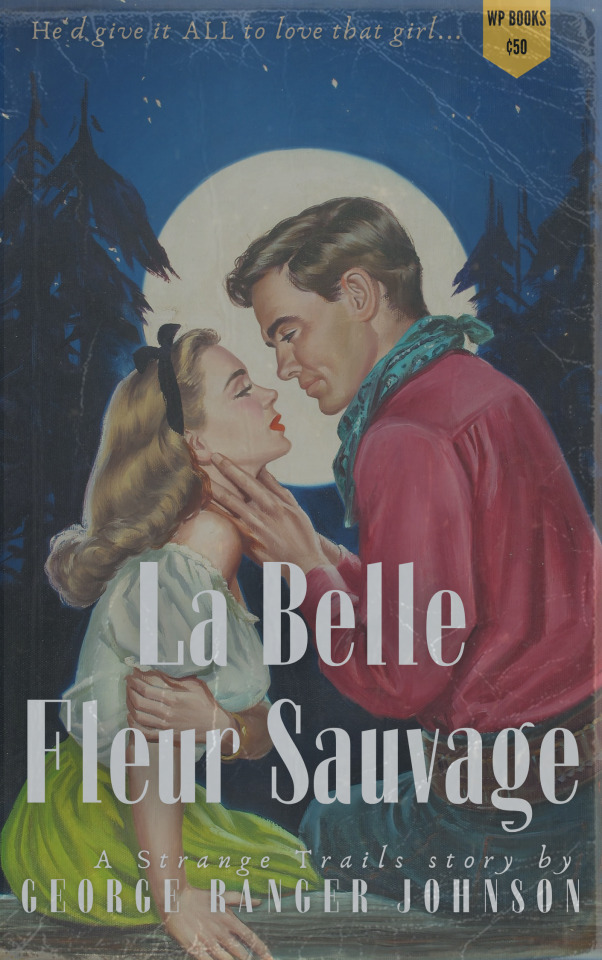
La Belle Fleur Sauvage (1989)
"I'll live yet to see him
Regret the dark hour
When he won, then neglected,
The frail wildwood flower"
- "Wildwood Flower," American folk song written by Maud Irving, best known as performed by Mother Maybelle Carter.
[Epigraph from La Belle Fleur Sauvage]
The fifth Strange Trails story is one of George Ranger Jonhson's most plain-cut romance novels. As he mentioned after the publication of Lullaby, he’d been wanting to write more “of tender things.”The story this time around comes to the patrons of George's Place from Remy Fusil, the Cajun Cowboy - a character who appears fairly little in the whole rest of GRJ's oeuvre, unless you believe certain theories of second identities (you'd be hard-pressed to find a character who doesn't have those!)
In retrospect, despite his seat in the hallowed pantheon of Strange Trails narrators, alongside such heavy-hitters as Frankie Lou and Buck Vernon, Fusil was a means to an end - that end being the introduction of Lee Green, who would play a major role in the whole rest of Johnson's works, develop from the sweet young flower of the Michigan woods she's portrayed as here, to, in the end of ends, that half-real eye-of-the-hurricane phantom haunting moonlit Mt. Monroe.
But we're getting two series ahead of ourselves. For now, in this book, GRJ deftly weaves together Remy and Lee's hesitant and, perhaps, a touch unreliably narrated romance, with the timeless legend of an unobtainable alpine flower - a legend that Remy swears is Cajun, but in other books we're told it might be Basque, or American folk. In other words, it's a story that comes from everywhere, and everyone. Maybe that's why this old tale's themes of obsessive pursuit ring through almost every page that GRJ ever set his pen to. Behind the kisses in the moonlight, there are always mountains unclimbable, withering flowers picked for ephemeral beauty once held, fools for love lying in the drifting snow, in the wind, lost in time and space, who'd give it all to pluck that fleur.
Oh yes, and we end with another cliffhanger. As Remy leans back in George's Place, having finished his tale of romance, he lights up a cigarette and a Bob Dylan tune comes on the jukebox. No one, he says, could ever challenge that his love was the purest. And then, to a galloping 4/4 beat, he hears footsteps approaching.
Keep following this blog for more insight into Johnson's work through the years.
May you live until you die!
#la belle fleur sauvage#strange trails#lee green#remy fusil#george ranger johnson#grj#pulp art#vintage paperbacks#pulp cover#paperback#pulp#vintage pulp#lord huron
84 notes
·
View notes
Text
People Burr has fucked:
Joseph Bellamy
78.39108 percent of Princeton's student body
Richard Montgomery
General Putnam
Theodosia Prevost
Alexander Hamilton
Thomas Jefferson
James Monroe (Jefferson made him)
Washington Irving
John Vanderlyn
James Wilkinson
Luther Martin
Blenner...hasset?
Both of the Swarthouts
Nicholas Bigbee Perkins
John Marshall (actually Burr tried but Marshall slammed the door in his face)
Jeremy Bentham
William Godwin
This list is developing don't be afraid to add to it:
Bobby Troup
Robert Livingston
Half the prostitutes in Europe
Himself
#i firmly believe William P VanNess is the straight friend#Joseph Alston isn't on here but he's on the list in my heart
24 notes
·
View notes
Text
Information for use in fan fiction and anything else related to The Bill. This will be added to and edited every so often and please feel free to comment if you want to add or edit anything.
Part 1
The Bill is set in the fictional Sun Hill which makes up part of the also fictional Borough Of Canley. It's roughly set around the areas of Whitechapel, Stepney, Shadwell, Spitalfields, Portoken, Limehouse and parts of Aldgate, Bishopsgate, Shoreditch and Mile End. It's also known as the Tower Hamlets area. Maps of Sun Hill show the Isle Of Dogs area.


The station address is: Sun Hill Police Station, 2 Sun Hill Road, Canley, London, E1 4KM. The telephone number is 020 7511 1642.
The caution: I am arresting you on suspicion of (OFFENCE: eg murder or sexual assault). You do not have to say anything, but it may harm your defence if you do not mention when questioned something which you later rely on in court. Anything you do say will be given in evidence.
This MUST be said, IN FULL, each time someone is arrested and officers MUST make sure that the person understands it ALL.
Vehicle Call Signs:
Area Car (Sierra 1, Sierra 1-2, Sierra 1-7, Sierra Oscar 21 and Sierra Oscar 22)
Van (Sierra 2)
CID Cars (Sierra Oscar 5 to 9) (Sierra-1-1 has lights/siren hidden like below but they have a magnetic light to stick on top like below)
TSG (Sierra Oscar 1-3)
IRV (Sierra Oscar 2-3)
Panda (Sierra Oscar 8-4, 8-5, 8-6, 8-7)

Officer call signs:
Sierra-Oscar 5-2 - Superintendents used this so it was the call sign for Brownlow (and Derek when he was acting Super), Chandler, Okaro, Prosser, Heaton and finally Jack Meadows.
Sierra-Oscar 5-4 was for Chief Inspectors so Derek, Cato and Stritch but the call sign and roll was retired at Sun Hill after Derek was killed.
Sierra-Oscar 5-5 was the call sign for DCI's so this is Kim Reid, Frank Burnside and Jack Meadows.
Sierra-Oscar 7-5 was used for Frank Burnside when DI
Sierra-Oscar 3-3 was used for Roy Galloway when DI
Sierra-Oscar 7-0 was used for Neil Manson when DI.
Sierra Oscar 7-1 was used for Sam Nixon when DI
Need to check on those for Johnson, Wray, Haines and Deakin if required but they can just use rank/surname as described below.
Sierra Oscar 3-2 was used for DS Geoff Daly (In All Change)
Sierra Oscar 6-7 was used for DS Don Beech (In All Change)
Sierra Oscar 2-8 was used for DS John Boulton (In All Change)
Sierra Oscar 3-6 was used for DC Will Fletcher
Sierra-Oscar 9-8 was used for DC Gary Best
Sierra-Oscar 4-2 was used for DC Grace Dasari.
Sierra Oscar 223 was used for DC Rod Skase (in All Change)
Sierra Oscar 613 was used for DC Duncan Lennox (In All Change)
CID would most often use their rank and surname too.
Sierra Oscar 1 was used for all inspectors at the station from Deeping, Kite, Frazer, Monroe, Matt when he was acting Inspector, Gina, Smithy when he was acting inspector, Rachel and then finally Smithy when full inspector. (Smithy was 833 as PC and 54 as Sgt)
SO25 - Rachel Weston
SO30 - Callum Stone
SO33 - Craig Gilmore
SO46 - Jo Masters (after moving from CID to uniform)
SO48 - June Ackland (SO643 when a PC)
SO48 - Diane Noble for one night (she was supposed to return but the ITV cut backs and the show moving to one episode a week meant her two-parter return was edited down to one episode and new scenes filmed to explain she was transfering to Barton St.)
SO54 - Smithy (833 as a PC and Sierra 1 as an Inspector)
SO54 - Jane Kendall and Tom Penny
SO55 - Ray Steele
SO61 - John Maitland
SO66 - Sheelagh Murphy (SO661 wheb demoted to PC)
SO79 - Matt Boyden
SO82 - Joseph Corrie
SO87 - Nikki Wright
SO92 - Bob Cryer
SO95 - Stuart Lamont
SO96 - Alec Peters
SO99 - Phil Hunter (during short punishment stint in uniform)
SO101 - Taffy (Francis Edwards)
SO128 - Lewis Hardy
SO134 - Phil Young
SO139 - Timothy Able
SO140 - Nick Klein
SO148 - Mel Ryder and Yorkie (Tony Smith)
SO149 - Gary Best (Changes so SO 9-8 in CID)
SO158 - Honey Harman
SO171 - Reginald Percival Hollis
SO201 - Dave Litten
SO202 - Kerry Young
SO201 - Pete Muswell
SO212 - Millie Brown
SO217 - Laura Bryant (was SO7667 when a PCSO)
SO218 - George Garfield
SO227 - Viv Martella
SO235 - Roz Clarke
SO249 - Gemma Osbourne
SO251 - Jamila Blake
SO258 - Beth Green
SO275 - Roger Valentine
SO294 - Danesh Patel
SO298 - Yvonne Hemmingway
SO315 - Dan Casper
SO330 - Robin Frank and Ron Smollett
SO335 - Donna Harris
SO340 - Dave Quinnan
SO342 - Abe Lyttleton
SO351 - Malcom Haynes
SO354 - Arun Ghir
SO355 - Cameron Tait
SO358 - Gary McCann
SO361 - Emma Keane and Vicky Hagen
SO362 - Luke Ashton (for his return post 2002)
SO363 - Steve Loxton, Lance Powell and Kirsty Knight
SO408 - Nick Slater
SO416 - Sam Harker, Ken Melvin and Gabriel Kent
SO432 - Luke Ashton (for his first 97-99 stint) and Des Taviner
SO437 - Leela Kapoor and Leon Taylor
SO452 - Adam Bostock
SO469 - Polly Page
SO483 - Diane Noble (was SO48 for her one night stint as Sgt)
SO487 - Cathy Marshall and Rosie Fox
SO510 - Billy Rowan (though poor love lasted half a shift)
SO517 - Mike Jarvis
SO518 - Cass Rickman
SO543 - Will Fletcher
SO561 - Debbie Keane
SO570 - Cathy Bradford
SO577 - Barry Stringer
SO595 - Tony Stamp
SO600 - Jim Carver
SO643 - June Ackland (SO48 as Sgt)
SO659 - Suzanne Ford
SO661 - Sheelagh Murphy (SO66 as Sgt)
SO682 - Di Worrell
SO686 - Sally Armstrong
SO740 - Ben Hayward
SO743 - Pete Ramsey
SO759 - Steve Hunter
SO795 - Ben Gayle
SO800 - Richard Turnham
SO832 - Delia French
SO833 - Smithy (SO54 as Sgt and Sierra 1 when Inspector)
SO876 - Nate Roberts
SO876 - Nick Shaw
SO888 - Amber Johannsen
SO943 - Andrea Dunbar
SO988 - Eddie Santini and Ruby Buxton
FED REPS: Federation Representatives support and advise officers if they've been accused of something or matters like pay, rights, allowances, conduct, equality and development etc. It's often mocked, mostly when Reg is in the position as everyone's favourite busy body, however it is a responsible position and Reg was very good at it if only due to his nitpicking and love of the rule book.
Fed reps: Reg Hollis, Barry Stringer, George Garfield, Nick Klein, Leela Kapoor
The Area Car can only be driven by the officers who are qualified to drive them for example: Roger Valentine, Tony Stamp, Kirsty Knight, Callum Stone, Ben Gayle, Gemma Osbourne, Yvonne Hemmingway, Matt Boyden, Vicky Hagen, Gina Gold, Steve Loxton, Mike Jarvis, Will Fletcher and Des Taviner.
Civillian Staff:
Jonathan Fox - Senior Crown Prosecutor and one time boyfriend of Gina Gold. He left Gina because she wouldn't commit right as she was about to commit to him. She tries to tell him this when he returns during her cancer fight but he's moved on with someone else... she can't handle just being friends so asks him to leave.
Matt Hinkley - Senior Crown Prosecutor
Eddie Olosunje - CSE
Lorna Hart - CSE
Audrey ?? - A CSE who checked Gabriel's clothes and is very friendly with Gina - they play poker together.
Dean McVerry - CAD
Marilyn Chambers - SRO - Reg was about to propose to her and was waiting for her where they had their first date when Colin Fairfax drove his van into the front of the station.
Julian 'JT' Tavell - SRO
Robbie Cryer - SRO (SRO's used to be Front Desk Officers)
DOPA Mia Perry (Press Officer) - Mickey's girlfriend who cheated on him with John Heaton
Margret Barnes - Cleaner who was obsessed with Ramani
Special Constable Terry Knowles (Killed on his first day trying to be like Des)
PCSO Colin Fairfax - Racist who drove a van into the front of the station, killing Ken, Marilyn and Andrea.
PCSO Laura Bryant - Became a full PC.
Marion Layland - Charles Brownlow's long suffering PA.
Rochelle Barrett - Drugs Referral Officer
Tom Kent - FME in the early 90's
Important Reoccurring Characters (Police):
Guy Mannion - Chief Super to Brownlow and then Borough Commander. Pain in the arse.
Trevor Hicks - DAC/Assistant Commissioner
Georgia Hobs - DAC
Roy Pearson - DAC. Neil Manson's father in law and user of rent boys. Murdered by one after attempting to retrieve a video that was being used to blackmail him.
Lisa Kennedy - Commander (Her son is involved in an altercation that leads to disaster at a football match)
Jane Fitzwilliam - Borough Commander
Louise Campbell - Borough Commander
Ian Barrett - Borough Commander - tried to blackmail PC Dan Casper into ending his affair with his wife, Rochelle. Ended up getting Dan held at gunpoint and left Sun Hill alongside his wife.
Amanda Prosser - acting Superintendent whilst Adam took time off following the death of his family in an RTA. Upset a bereaved father who then took her hostage at gunpoint and caused a siege at Sun Hill (second live episode)
Rowanne Morell - DI/DCI who came in to investigate a case and then came in as cover for Neil whilst he took some time off after his father in law's death/end of his marriage.
Andrew Ross - DCI if I remember rightly he was part of MIT and kept coming over for murders - the Serial Killer/Des's Fire bombing/Cathy's murders etc.
Frank Keane - DCI from MIT. Rubbed everyone up the wrong way and thought the sun shone out of his daughter - Emma's - arse.
Karen Lacy - stuck up DI from SO15 who immediately alienated most of Sun Hill after Emma's death by refusing to let her friends in uniform help and would only let them man a cordon and then told Jack that CID could only help if EVERYTHING was ran through her and came back to her and her alone.
Tom Baker - TREV which was a fan coined term that stands for Totally Reliable Extra Veteran'. Tom was an outstanding back up CID member for over a thousand episodes. He's even in the Guiness Book Of World Records for it.
Terry Knowles - Terry was a Special Constable who idolised Des and wanted to be like him. He tried to copy how he'd seen him pick up a woman and flirted at a blonde in a convertible. Unfortunately it all went wrong when she stabbed him in the neck and severed his jugular and he died, leaving a 2 year old son fatherless.
Doug Wright - husband of Sgt Nikki Wright. Nikki transferred to Sun Hill when she got fed up of the confusion over two Sgt Wright's and then having to work opposing shifts. He's based at Sun Hill but they cross over to police a football match. Sadly Doug ends up getting stabbed and they realise there's a Cop Killer on the loose after he taunts them and goes on to murder new recruit Billy Rowan on his very first day.
Mark Rollin - Lance Powell's Boyfriend/Fiance/Civil Partner/Husband. Mark is a Sgt in CO19 and keeps his sexuality hidden to avoid the banter and bullying. He goes to pieces after shooting dead Jeff Clarke and he and Lance separate - only for Lance to go out drinking to try cheer himself up and be murdered.
Steve Hodges - an irritating little man who was the Detective Superintendent at CIB at the time that Claire Stanton was undercover trying to get information to prove that Don Beech was corrupt. He expected Claire to pull evidence out her arse and moaned constantly.
Rachel Kitson - Crime Scene Photographer who murdered old school friend turned Super Model Cindy Statham. She got away with it and someone else was accused and locked up...but then Jo went back and looked at the footage again as she had a niggling feeling. Rachel realised she was on to her and took her hostage at gunpoint. It was Stuart getting suspicious when he received a text calling him 'hun' and realising that something was very wrong that saved her life with seconds to go.
Important Reoccurring Characters (Civilians):
Rod Jessop - June's second husband after Jim. He is a headteacher and a good man who has 2 children of his own. At first June isn't too sure as she thinks he's a little too keen but she warms to him and they fall in love and take early retirement together.
Irene Radford - Mother of Karl, Wayne and David Radford, a large crime family with a history going back decades with Gina. She takes Gina hostage at one point and she and David are literally seconds from killing Smithy and Kerry at another point!
Louise Larson - Wife of Pete Larson. Unhappily married but settled until she met Smithy. Feisty, sarcastic and full of one liners, she kept him on his toes and they wanted to leave after she agreed to give evidence (Pete was arrested after almost murdering Smithy. I'm sensing a theme here).
Abi Nixon - The cause of Sam shrieking "MY DAUGHTER!!!!!" Had a fling with Matt Boyden - as you do. Then ended up pregnant and engaged to Hugh Wallis - a profiler - who manipulated Abi into it as revenge. He forced Sam to think her daughter was a victim of the Serial Killer. She keeps the baby and her relationship with her mother improves.
Cindy Hunter - Phil Hunter's wife who sees all he does on the side and - usually forgives him, even when a major criminal demands he be allowed to sleep with Cindy. Gregory doesn't force her to sleep with him but does take degrading pictures of her to wind Phil up. She still forgives him... but she can't get past finding out he has a daughter with another major criminals wife when they are trying for a baby of their own and they finally split.
Jenny Delaney - The girlfriend of George Garfield at first, Jenny is the nurse who looks after Dave Quinnan when he is attacked and left for dead in a youth club. She and Dave fall in love and have an affair which ends up in George leaving Sun Hill. They marry but do not get their happily ever after as Dave and Polly grow closer... and closer...
Kristen Shaw - Drug dealer who Zain goes undercover to catch and he ends up falling for her. She accidentally murders Honey by shooting her when the gun goes off in a struggle (Honey was trying to get Zain to do the right thing and arrest her with him). Zain reluctantly puts Honey's body in the water and they try to escape but in the end he can't go through with it and refuses to get on the boat with her to escape. He removed the bullets from her gun and so both end up arrested.
James Tennant - The father of Amy Tennant. This storyline goes on forever for over a year and Neil and James get close and become good friends through it before Amy is found.
Scott Burnett - Scott is the husband of a woman who is found murdered. At first his best friend is charged with it and as his FLO, Honey helps support him through it. They fall in love and in a whirlwind romance they get married.... only for Honey to realise that Scott actually murdered his first wife!
Laura Meadows - Jack's long suffering wife who put up with a lot, including affairs. It comes to a head when Jack - in full midlife crisis mode - thinks he's in love with Debbie McAllister and wants to support her and her new baby. Debbie thinks of him mostly as a father figure and is horrified when he finally puts the moves on.
Lilian Rickman - Cass' mum is devastated when her daughter is killed by the Sun Hill Serial Killer. She travels down and bonds with the team and later invites them to the funeral in Liverpool which some travel up to and then have to go straight on shift once they get back to London. She later returns to tie up the sale of Cass' flat and she and Tony grow closer and end up sleeping together.
Marie Graham/Carver - The bereaved mother whos daughter killed herself after being accused of sleeping with underage students. She's an alcoholic who seemed to understand Jim and all his problems... and then started to abuse him 2 days after their marriage. (he should have known it was a bad omen when he and June almost kissed the day of the wedding when trapped with Polly and Tony!)He is accused of abusing her before he ends up in hospital (Gabriel hit him over the back of the head with a vodka bottle - long story) and he cracks under accusations and shows his many wounds. He leaves Marie and goes on to recover and get back together with June... only for Marie to turn up on THEIR wedding day and cause a scene at the reception and then fall down the stairs and knock herself out. Jim, with a sprained ankle, ends up going into hospital too!
Pauline Smith - Smithy's mum seen in Killer On The Run. His father was an abusive drunk who used to knock her and Smithy around until Smithy was old enough to go out with his friends. Smithy has little to do with his unnamed father and next to no contact. She adores her son and is very proud of him. They are close and Smithy has a key to her house. He also had an unnamed little brother as a PC (mentioned in Soft Talking) but this seemed forgotten when he returned as a Sgt.
#the bill#alex walkinshaw#dale smith#smithy#roberta taylor#gina gold#smiffina#sam callis#callum stone#john boulton#russell boulter#jim carver#mark wingett#don beech#billy murray#leon taylor#dominic power#june ackland#trudie goodwin#chris jarvis#dan casper#will fletcher#gary lucy#mickey webb#chris simmons#kirsty knight#sarah manners#bruce byron#terry perkins#christopher fox
9 notes
·
View notes
Text

A Child's Memory of a Past Life as a Hollywood Actor and Agent
From Return to Life: Extraordinary Cases of Children Who Remember Past Lives by Jim Tucker, MD (2013), Chapter 5
A five-year-old child, Ryan, had been telling his parents for about a year about wanting to go home to Hollywood to see his "other family". He was very insistent and would not stop talking about it, and spent much of his playtime acting out being in the movies. His parents were conservative Christians who did not believe in reincarnation and contacted past life researchers only when the boy kept having nightmares where he would wake up grabbing his chest and saying when he was in Hollywood his heart exploded. Ryan also described what it was like to die and be reborn, as well as correctly describing some incidents that occurred during her pregnancy with Ryan that he should have had no way of knowing about.
The mother took Ryan to the library to look at pictures of Hollywood. He recognized Rita Hayworth from a photograph, and said he knew her and that she made him a Coke float. When they came across a production photo from a Mae West film called Night After Night he became very excited. Recognizing one person, he said “Hey Mama, that’s George. We did a picture together. And Mama, that guy’s me. I found me.”

The man Ryan recognized as "George" was George Raft, one of the stars of the picture. The man Ryan pointed to as "me" appears on the far right side of the above photo, wearing a bow tie, bowler hat and tan overcoat; he played a minor, uncredited role in the film. Ryan described a scene he was in involving a closet full of guns, and when they later reviewed the film on YouTube there was indeed such a scene.
Ryan offered several other comments about people he knew in Hollywood such as Marilyn Monroe; when he tried to pick her up at a party, a minder from the studio gave him a shiner.
His mother kept a journal of Ryan’s statements and contacted a research team at the University of Virginia. Ryan was initially reluctant to discuss his memories with anyone but his parents for fear people would think he was crazy. Ryan said the reason he had to come back was that he didn’t spend enough time with his family in his last life; he worked so much that he forgot that love was the most important thing.
Ryan had nightmares about a man he called “Senator Five” who he said was “the nastiest villain who ever lived” and lived in New York, talked about an agency and going to a graveyard with a buddy who worked for that agency. He started kindergarten but got off on the wrong foot for telling the class about Hollywood and the agency during story time, opening himself up to ridicule from his classmates.
Ryan also began talking about Broadway, and Ryan began tap dancing during cartoons that had music. Ryan said when he lived before he had taught himself and danced tap routines with two buddies.
Ryan reacted very strongly to a film clip of Franklin Roosevelt, booing and calling him an idiot. He also made many statements about his family: his past mother had curly brown hair, he had two sisters one of whom was three years younger than him, and he had a difficult relationship with one of his stepdaughters. He also claimed to have taken a “big boat” to visit Paris, New York and China (where he said he had to learn to eat with chopsticks.) Ryan loved Chinese food and was unusually proficient with chopsticks for a five-year-old child.
Ryan made numerous other statements about his previous life that I am omitting for brevity. Before discusses these, as well as the researchers’ efforts to validate them.
After some digging, researchers found a possible candidate for “Senator Five”. Ryan was shown several photographs and asked if he recognized any of them. The researchers took care to make sure they were not giving any subtle hints. He recognized one person - Irving Ives, US Senator for New York for 12 years in the late 40s and 50s. Ryan said he was “Senator Five”.

US Senator Irving Ives
The researchers finally traced the man in the photograph wearing the bowler. His name was Marty Martyn. They were able to trace and contact Martyn’s only biological daughter, who verified many details supplied by Ryan: Martyn’s mother had curly brown hair, he had two sisters, and he had gone to New York early in his career to be a dancer. He then went to Hollywood and began as an extra and a dance director. He then became a talent agent and set up the Marty Martyn Agency. Martyn had several connections to Rita Hayworth. His wife’s family knew Marilyn Monroe. Martyn became quite wealthy and married four times. Ryan said his address had had the word Rock or Mount in it, and Martyn’s house address was 825 N. Roxbury.
Martyn did travel the world, going to Paris on the Queen Mary. The daughter wasn’t sure but doubted that Martyn went to China, but Chinese food was a favorite of his and he was proficient with chopsticks. He was a Republican who hated Franklin Roosevelt. The daughter had a photograph of Martyn with Senator Ives. She confirmed that Martyn did have a difficult relationship with his oldest stepdaughter.
Martyn died on Christmas Day in 1964, of a cerebral hemorrhage. His death was unwitnessed, so there was no way to resolve the discrepancy about Ryan claiming his heart “exploded” and being unable to breathe. As Ryan got older his recollections became less frequent until they finally stopped altogether.
4 notes
·
View notes
Text
scandalous beauty: bettie page - an analysis
“I was never the girl next door.” - Bettie Page
The life of those with Cancer energy is often a strange and quietly revolutionary one. She had the most perfect body ever photographed. At least one historian has ranked her popularity as a pin-up just behind Marilyn Monroe and, arguably, Jayne Mansfield, but her career followed a very different path. From an impoverished Tennessee girl to an iconic 1950s model, Bettie Page was a legendary pinup girl whose photographs in the nude, in bondage and in naughty-but-nice poses appeared in many (privately stashed) men's magazines. Page’s introduction to the limelight was unusual. She went from a Homecoming Queen to an aspiring Hollywood starlet, but her one and only screen-test was an utter bust as she boldly rejected the producer’s advances to meet her after hours. She turned to pinup modeling, and her fate was sealed. Her way of posing was instictive (Tarurus sun) and intutitive (Cancer moon); I got the sense that there was a passion play unfolding in her mind. What some see as a bad-girl image was in fact a certain sensual freedom and play-acting - it was part of the fun of being a woman. Most people that saw her photos were enchanted. A cult figure, Page was famous for the estimated 20,000 black-and-white glossy photographs taken by amateur shutterbugs from 1949 to 1957.
Some, however were not as enchanted with Miss Page; these pictures wound up drawing the attention of an ambitious United States senator who launched an investigation on pornography’s impact on youth. The investigation uncovered a scandal that marred Page’s career and she shortly thereafter vanished from the New York City scene for good. Decades later, those images inspired biographies, comic books, fan clubs, websites, commercial products -- Bettie Page playing cards, dress-up magnet sets, action figures, Zippo lighters, shot glasses -- and, in 2005, a film about her life and times, The Notorious Bettie Page. Though Bettie was the most famous postwar pinup girl in American history, her later life proved to be far less glamorous. By the end of ’50s, the most photographed model of the 20th century had become a total recluse. As with Monroe and Mansfield, the sadness of her life was found in the space between. Nonetheless, Bettie left behind a formidable legacy: she helped usher in the sexual revolution of the 1960s, inspired legions of artists, and remains an icon of feminine power and sexual expression.

Bettie Mae Page, according to astrotheme, was a Taurus sun and Cancer moon. She was born in Nashville, the oldest girl among Roy and Edna Page’s six children. Her father, an auto mechanic, molested her and her other two sisters. Her parents divorced in 1933, but life didn’t get any easier for Bettie. Shortly after the divorce, when Page was 10, she and her two sisters were sent to an orphanage for a year. Her mother neglected her, not wanting to have any girls. She thought they were trouble. Despite her troubles at home, Bettie excelled at in high school; she became Homecoming Queen and garnered a scholarship to George Peabody College. Graduating in 1943, she married her high school sweetheart Billy Neal and moved to San Francisco. After high school, Page earned a teaching credential. But her career in the classroom was short-lived, since she couldn’t control her students. She tried secretarial work and modeled on the side. But by 1948 she had divorced a violent husband and fled to New York City, where she enrolled in acting classes. She was noticed on the beach at Coney Island by New York police officer and amateur photographer Jerry Tibbs, who introduced her to nude camera clubs. She soon made it into the pages of magazines like Wink and Flirt. Her most professional photographs were taken in 1955 by fashion photographer Bunny Yeager, but her 1955 Playboy centerfold brought her career to the next level. Page quickly became a sought-after model, attracting the attention of Irving Klaw and his sister, Paula, who operated a mail-order business specializing in cheesecake and bondage poses. For Senator Estes Kefauver, Page and photographers like Klaw were “a bad influence and degrading.” Kefauver formed a sub-committee on juvenile delinquency to investigate just how bad of an influence they were and found the case of a Florida man named Clarence Grimm who said his son’s suicide was influenced by Page. Grimm testified that his dead son Kenneth was found hanging by his knees and neck. The committee’s special counsel Vincent Gaughan led him to confirm that this position was wholly inspired by Klaw’s BDSM photos of Page, with the photographer left in ruins as a result — and Page leaving town.
At 35, Page walked away from it all. She quit modeling and moved to Florida, where an experience at a multiracial Baptist church on New Year’s Eve 1957 saw her born again. It was also where she married a much younger man whose passions, she later learned, were watching television and eating hamburgers. Page immersed herself in Bible studies and served as a counselor for the Billy Graham Crusade. In 1967, she married for a third time to Harry Lear. After that marriage ended in divorce 11 years later, Page plunged into a depression marked by violent mood swings. With uncontrollable bursts of anger, Page ran through a Boca Raton ministry retreat with a .22-caliber pistol in January 1972. In April, she forced her husband and his children at knife-point to pray to Jesus. She argued with her landlady and attacked her with a knife, but after twice assaulting elderly women with whom she was boarding, she was charged with attempted murder. A judge found her innocent by reason of insanity but sentenced her to 10 years in a California mental institution. She was released in 1992 from Patton State to find that she had unwittingly become a pop-culture icon. In Bettie’s absence, the public grew increasingly curious about her. So much so, in fact, that Penthouse magazine offered anyone who could prove she was dead or alive $1,000. With the help of admirers, including Playboy founder Hugh Hefner, Page finally began receiving a respectable income for her work. She spent most of her final years in a one-bedroom apartment, reading the Bible, listening to Christian and country tunes, watching westerns on television, catching up on diet and exercise regimens or sometimes perusing secondhand clothing stores. After years of living on Social Security benefits and royalties, Page ultimately died of a heart attack at the age of 85 on Dec. 11, 2008, after being hospitalized with pneumonia days earlier.
Next, I will focus on another Taurus, a dashing and swashbuckling leading man whose untimely death made him an early legend: Tyrone Power.

STATS
birthdate: April 22, 1923
major planets:
Sun: Taurus
Moon: Cancer
Rising: Scorpio
Mercury: Taurus
Venus: Pisces
Mars: Gemini
Midheaven: Leo
Jupiter: Scorpio
Saturn: Libra
Uranus: Pisces
Neptune: Leo
Pluto: Cancer
Overall personality snapshot: Whatever she did – be it in business, catering, the caring professions or indeed at home – she was undoubtedly one of the great ‘mothers’ of the world. She had a strongly protective, sensitive and nurturing approach to all that she did. She had the potential to become the ideal parent, teacher and friend. Immensely sympathetic, understanding and supportive, she was able to encourage and bring out the best in those people and organizations she cared for and with whom she came into contact. Her strong sense of the value of things gave her an excellent business and economic sense, enabling her to spot a bargain and to conserve and build up her financial resources. This was assisted by her capacity for getting others to feel protective towards her. Whilst she tended to lack the more dynamic get-up-and-go self-confidence of the classic entrepreneur, she had nonetheless a quiet determination which got her wherever she wanted to go. Her home, and no doubt her evergreen garden, would have been especially important to her and she made her ‘nest’ both secure and comfortable. She was a naturally good neighbour, and although she tended to be a rather quiet, private and indeed even secretive person, she did feel a sense of responsibility for those around her. This meant that she was the child who ended up looking after her parents when her brothers and sisters are off doing their own thing.
She was strongly sensual and tended to be rather allergic to ideas and theories. She thought best in pictures and symbols and by simply doing and experiencing things, and getting the feel of how they work. She was naturally creative and artistic with a strongly lyrical, musical and poetic bent. She could get swept away on a soaring melody, or by a particular nuance of colour, scent or texture. She used her body as a barometer, for it tended to reflect faithfully her inner moods and emotions. Childhood was, and probably still is, enormously important to her. In an often threatening world, she may well have sought to retreat into the secure and familiar. This may have led her to seek out a steady, routine occupation which offered long-term security rather than something that could feed her rich imagination. When these two sides of her were working in creative tandem, this was an immensely caring combination. It is an ideal mix for anyone in the caring, counselling or nursing professions or indeed in any kind of work where the care and nourishment of others is the central preoccupation, such as infant-school teaching, catering and hotel work.
She had dark, brooding looks with thick, abundant hair and strongly marked eyebrows that framed the most important feature of her face, her eyes. Her eyes had a piercing, penetrating quality. Overall, she gave the impression of quietly contained power. Her movements were controlled, and her clothes were chosen for their dramatic value. With her commanding personality, she was able to instill fear and apprehension if she wished. She held a lot of hidden rage and passion within her, which had to be released. She was practical, steady and patient, but she could be inflexible in her views. One thing she did have was plenty of common sense and good powers of concentration, although she tended to think that purely abstract thought was a waste of time. Her thought processes weren’t as quick as others, but her decisions were made with a lot of thought behind them. She was ambitious without being ruthless. She became deeply involved in her work, wanting to work at the highest level. Work and leisure may have been (and was) indivisible, especially with her work being artistic or creative. She was well suited to her career as a pinup model, since it promised and delivered publicity as well as a scope for showing off. She could be an intensely emotional person with extremely strong physical desires. She tended to see herself as a desirable person to the opposite sex. She needed to be loved, but she could also be extremely suspicious of other people and their motives. Her perseverance was strong, but she also needed to learn moderation and not to over-rate her abilities or capacity for doing things. She believed that fair play, justice, tact and diplomacy were all extremely important. Her reasonable outlook and kind and pleasant character endeared her to others. She liked to encourage social contacts that enhanced her image. She was meant to learn a lot from relationships in her life through the way she handled them, and through issues of compromise. As long as she felt secure within herself, a partnership brought her much happiness, stability and contentment.
She belonged to a generation gifted with original and unusual artistic talents, highly imaginative, secretive and visionary. She personified the Piscean Uranus generation in the sense that she felt uncomfortable facing reality, finding the world a difficult place to survive in. She relied on negative escapism as a preferred way of escaping the harsh reality of the world around her. The unknown and the taboo appealed to her, because she wanted to have the freedom to explore and think for herself. She was part of a very artistically talented and creative generation that wanted to escape from the demands of the world around them into a world of excitement and glamour. Members of this generation love the theater and the cinema, in fact, any sort of creative self-expression. They also believed in the rights of any individual to express themselves. This generation was both idealistic and romantic, selfish and individualistic. Page embodied all of these Leo Neptunian ideals. Also, as a member of the Leo Neptune generation, she experienced and fully embraced changes in sexual mores and attitudes, changing the way people approach the whole issue of romantic relationships. Changes were also experienced in the relationships between parents and children, with the ties becoming looser. Page was part of a generation known for its devastating social upheavals concerning home and family. The whole general pattern of family life experienced enormous changes and upheavals; as a Cancer Plutonian, this aspect is highlighted with Page’s father molesting her and her mother wanting boys instead of her and her sisters, as well as her stint in an orphanage.
Love/sex life: She was an extremely alluring and sensual Gemini Martian lover whose sexuality was an uneven blend of craftiness and innocence. She was very rational about sex and approached it with great clarity of purpose but even at her most calculating moment, deep emotional needs and feelings of vulnerability clouded her judgments. This made her one of the most unpredictable and irrational lovers of this type—a partner who could be cool and clinging, distant and irresistible all at the same time. At her worst, she was a compulsive charmer who won everyone’s love and no one’s confidence. At her best, she was the sexiest and most empathetic lover of this type. She was supremely sensitive to the needs of her partner and well-informed enough to answer all of them. There was an element of shyness and passivity about her sexuality. She needed to feel safe and protected in order to explore the full range of her sexual curiosity but, once she was sure of her ground, there was no holding her back. Page overcame her shyness and became the iconic sexy pin-up girl of the 1950s, posing sometimes as the sexy girl-next-door and sometimes as a leopard-skin clad dominatrix. After she was threatened by federal investigators incensed by the “pornographic” images of her body, Page abruptly quit modeling, turned to Jesus, and ended up in an insane asylum.
minor asteroids and points:
North Node: Virgo
Lilith: Taurus
Vertex: Virgo
Fortune: Capricorn
East Point: Pisces
Her North Node in Virgo that her tendency to dream and be disorganized needed to be tempered by developing more practical and down-to-earth attitudes. Her Lilith in Taurus ensured that she was an unabashed sensualist. She was earthy, smutty, and totally without apology for her perfectly natural needs. Her gut instincts were impeccable, her libido formidable. Her sexual life-forces operated above and beyond petty morality. Her Vertex in Virgo, 7th house dictated that she wanted a union which would take one to ultimate salvation or spiritual initiation, based on a shared ideal of dedication and service. There was a fantasy of joining with someone who had unique psychic and/or healing powers and the focus is on the practical work which will make everything all right. She was always in a partnership of one kind or another (if only in her head), desperately seeking one, or have decided that it wasn’t worth the risk since his expectations would never be met. There was a sense that she wasn’t really complete unless she was intimately involved with someone. On some levels there was an irrational fear of ending up alone. The dark side was that she could get highly self-righteous about acceptable modes of behaviour in interacting with others and thereby alienate the very people she longed for. Her parental role model was less than secure in her subconscious perceptions, though it may have seemed fine on an external level.
Her Part of Fortune in Capricorn and Part of Spirit in Cancer dictated that her destiny lay in creating practical and long-lasting achievements. Success came through hard work, determination, responsibility and perseverance. Fulfillment came from observing her progress through life and seeing it take a form and structure that will outlive her. Her soul’s purpose guided her towards building security in her life, both emotional and material. She felt spiritual connections and the spark of the divine within her home and family. East Point in Pisces more of her identity was tied to idealism and the search for mystic oneness. This generally led to high standards for herself. (“I should be perfect.” Or, “I already am perfect and the world should recognize it.”) The three major roles through which individuals express the idealism of Pisces are: artist, saviour and victim. As such, the choice was hers whether she sought the connection to the Infinite through creating more beauty in the world, through making a more perfect world, or by running away to her own imagined world.
elemental dominance:
water
fire
She had high sensitivity and elevation through feelings. Her heart and her emotions were her driving forces, and she couldn’t do anything on earth if she didn’t feel a strong effective charge. She needed to love in order to understand, and to feel in order to take action, which caused a certain vulnerability which she should (and often did) fight against. She was dynamic and passionate, with strong leadership ability. She generated enormous warmth and vibrancy. She was exciting to be around, because she was genuinely enthusiastic and usually friendly. However, she could either be harnessed into helpful energy or flame up and cause destruction. Ultimately, she chose the latter. Confident and opinionated, she was fond of declarative statements such as “I will do this” or “It’s this way.” When out of control—usually because she was bored, or hadn’t been acknowledged—she was be bossy, demanding, and even tyrannical. But at her best, her confidence and vision inspired others to conquer new territory in the world, in society, and in themselves.
modality dominance:
mutable
She wasn’t particularly interested in spearheading new ventures or dealing with the day-to-day challenges of organization and management. She excelled at performing tasks and producing outcomes. She was flexible and liked to finish things. Was also likely undependable, lacking in initiative, and disorganized. Had an itchy restlessness and an unwillingness to buckle down to the task at hand. Probably had a chronic inability to commit—to a job, a relationship, or even to a set of values.
house dominants:
1st
4th
2nd
Her personality, disposition and temperament was highlighted in her life. The manner in which she expressed herself and the way she approached other people is also highlighted. The way she approached new situations and circumstances contributed to show how she set about her life’s goals. Early childhood experiences also factored in her life as well. The domestic arena and the home were emphasized in her life. By extension, the influence of the family she was born into, and the parents that raised her, in particular her father, as well as her personal and private life was of paramount importance to her. The material side of life, including money and finances, income and expenditure, and worldly goods, was emphasized in her life. Also, the areas of innate resources, such as her self-worth, feelings and emotions, were paramount in her life. What she considered her personal security and what she desired was also paramount.
planet dominants:
Uranus
Neptune
Jupiter
She was unique and protected her individuality. She had disruptions appear in her life that brought unpleasant and unexpected surprises and she immersed herself in areas of her life in which these disruptions occur. Change galvanized her. She was inventive, creative, and original. She was of a contemplative nature, particularly receptive to ambiances, places, and people. She gladly cultivated the art of letting go, and allowed the natural unfolding of events to construct her world. She followed her inspirations, for better or for worse. She had luck, and believed in expansion, integration, and growth. She could also be excessive and lazy. She reached out beyond herself and expanded her consciousness. She loved travel, was fairly religious, and liked to integrate herself into the larger social order—church or religion, community, and corporation. She had intellectual and spiritual interests in the most.
sign dominants:
Pisces
Cancer
Taurus
She needed to explore her world through her emotions. She felt things so deeply that quite often she became a kind of psychic sponge, absorbing the emotions of people around her. As such, she gravitated toward the arts, in general, to theater and film specifically. She could be ambivalent and indecisive simply because she was so impressionable. She also tended to be moody because she felt the very height of joy and the utter depths of despair. Love and romance were essential for her. These fulfilled her emotionally, and she generally flourished within stable relationships. At first meeting, she seemed enigmatic, elusive. She needed roots, a place or even a state of mind that she could call her own. She needed a safe harbor, a refuge in which to retreat for solitude. She was generally gentle and kind, unless he was hurt. Then she could become vindictive and sharp-spoken. She was affectionate, passionate, and even possessive at times. She was intuitive and was perhaps even psychic. Experience flowed through her emotionally. She was often moody and always changeable; her interests and social circles shifted constantly. She was emotion distilled into its purest form. Her stubbornness and determination kept her around for the long haul on any project or endeavour. She was incredibly patient, singular in her pursuit of goals, and determined to attain what she wanted. Although she lacked versatility, she compensated for it by enduring whatever she had to in order to get what she wanted. She enjoyed being surrounded by nice things. She liked fine art and music, and may have had considerable musical ability. She also had a talent for working with her hands.
Read more about her under the cut.
Bettie Page's life was filled with cult myth, mystery and sadness. Her image captured the imagination of a generation with her free spirit and unabashed sensuality, during an era of strong sexual repression. She was the quintessential pin-up, tacked up on walls in military barracks and garages; five decades later, some feminists still hail her as a pioneer of women's liberation. It has been estimated that over 20,000 photographs of Bettie were taken, and new generations of fans still buy copies by the thousands. Born in Nashville, Tennessee to a part-Cherokee mother, she grew up in a family so poor "we were lucky to get an orange in our Christmas stockings." The family included three boys and three girls, and Page later said her father molested most of the girls. He eventually stole a police car for a cross-country trip, was caught and sent to prison, and for a time Bettie resided in an orphanage. Her parents divorced when she was 10 years old.
In her teens, Bettie acted in high school plays and was a straight-A student. She graduated from the Peabody College for Teachers in Nashville on a Daughters of the American Revolution scholarship in 1944, and went on to study drama in New York City. Her notorious career began one day in October 1950, while on a break from her job as a secretary in a New York office. On a walk along the beach at Coney Island, an amateur photographer admired the 27-year-old's curvaceous body and asked her to pose. Nudity didn't bother her, she said, likening it to Adam and Eve in the Garden of Eden. Her modeling career took off, and she was the centerfold in the January 1955 issue of then-fledgling Playboy magazine.
In 1951, Bettie fell under the influence of Irving Klaw, a photographer. He cut her hair into the dark bangs that became her trademark, and posed her in spiked heels and little else. She also appeared as a performer in over 50 burlesque films. Her photos and films were publicly denounced by civic and religious leaders as "perversion", and Klaw was later arrested for "conspiracy to distribute obscene material" through the United States mail. Bettie was called to testify in a private session. Senator Estes Kefauver of Tennessee, her home state, even launched a congressional investigation against her. Believing that her days as a pin-up were over, Bettie retreated from public view, later saying she was hounded by federal agents. Her early marriage to her high school sweetheart had ended in divorce; she moved to Florida in 1957 and married a much younger man, but that marriage also failed, as did a third, and she suffered a nervous breakdown.
In 1959, she was lying on a sea wall in Key West when she saw a church with a white neon cross on top. She walked inside and became a born-again Christian. After attending Bible school, she wanted to serve as a missionary but was turned down. Instead, she worked full-time for evangelist Billy Graham's ministry. However, a move to Southern California in 1979 brought her more troubles. She was arrested after an altercation with her landlady. Doctors diagnosed her as suffering from acute schizophrenia, and she spent 20 months in Patton State Hospital in San Bernardino and she was subsequently placed under state supervision for eight years.
Her mysterious disappearance from the public eye only fueled the public's fascination. In fact, for two decades no one was sure where she was or even if she was still alive. She resurfaced in the 1990s after being tracked down for a documentary. She occasionally granted interviews and sold autographs, but refused to allow her picture to be taken in her old age. In a 1993 telephone interview, she told a reporter that she was "penniless and infamous." She later hired a law firm to help her recoup some of the profits being made with her likeness. She spent her final years residing in Los Angeles with her brother.
After a three-week battle with pneumonia, Bettie Page suffered a deadly heart attack at age 85 on December 11, 2008. (x)
35 notes
·
View notes